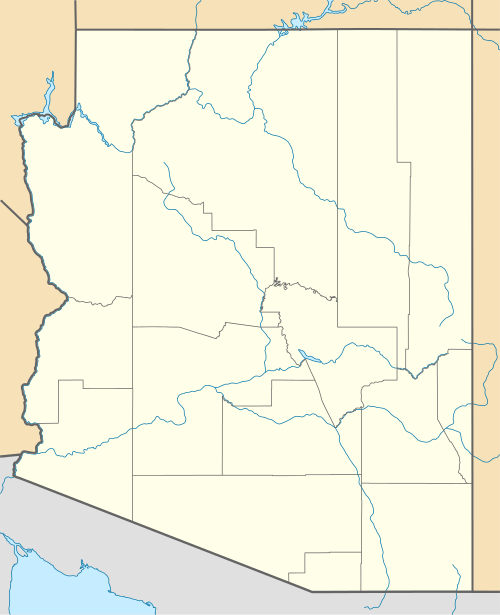Sabino Canyon
| Sabino Canyon | |
|---|---|
|
Sabino Canyon in 2002. | |
 Sabino Canyon Location in the state of Arizona | |
| Location | Santa Catalina Mountains, Arizona, United States |
| Geography | |
| Coordinates | 32°19′20.52″N 110°48′35.36″W / 32.3223667°N 110.8098222°WCoordinates: 32°19′20.52″N 110°48′35.36″W / 32.3223667°N 110.8098222°W |
| Topo map | Sabino Canyon, AZ |
| Watercourses | Sabino Creek |
Sabino Canyon is a significant canyon located in the Santa Catalina Mountains and the Coronado National Forest north of Tucson, Arizona, United States. Sabino Canyon is a popular recreation area for residents and visitors of Southern Arizona, providing a place to walk, hike or ride. Minutes away from the desert are large waterfalls along Sabino Creek with minor bridges constructed over them. Wildlife in the canyon includes deer, javelina, skunks, tortoises, rattlesnakes and mountain lions.
History and formation
The history of Sabino Canyon began with the formation of the Santa Catalina Mountains over 12 million years ago. Around 5 million B.C., the mountains ceased formation around the Tucson valley. Present-day varieties of plant life first appeared between 6,000 and 8,000 years ago, and some of the earliest human occupants of Sabino Canyon were the Native American Hohokam people.
An earthquake centered in northern Mexico in 1887 dislodged massive boulders lining the canyon walls, which came to rest in the valley below. In 1905 the newly created U.S. Forest Service began administering Sabino Canyon. During the Great Depression, the Works Progress Administration (WPA) and Emergency Relief Administration (ERA) built Sabino Dam and nine bridges over Sabino Creek in an attempt to build a road to the top of Mount Lemmon. The road travels about 4.5 miles into the canyon, but was not completed due to the steep terrain at the end of the canyon.
Trams
The first trams in Sabino Canyon began operating in October, 1978. From that point forward, access by cars was restricted to allow visitors to reach Upper Sabino Canyon by foot, bicycle or tram. Sabino Canyon Tours was founded in May, 1985 and provides visitors the opportunity to experience the noted beauty of Sabino Canyon.
Flooding
On July 31, 2006, flooding from a thunderstorm washed out the bridge at Rattlesnake Creek (just beyond mile marker 1 and shuttle stop #1), restricting the tram to the road below this point. Many portions of the roadway above Rattlesnake Creek also received damage from the flooding, including silt and debris scattered onto it. Tram service has now been completely restored, with the tram being able to complete all nine stops.
Funding
Federal funding is increasingly unable to keep pace with the pressures that urbanization and over a million visitors a year have placed on Sabino Canyon. Friends of Sabino Canyon, an independent non-profit organization, was founded in 1993 to raise additional funds to preserve and enhance Sabino Canyon.
Friends of Sabino Canyon has provided nearly $500,000 for projects in Sabino Canyon, including trail rehabilitation in the aftermath of the Aspen Fire, a water well, educational exhibits in the visitor center, new entrance plaza facilities, research into bats, amphibians and reptiles, and the restoration of the original Lowell House Ranger Station and the historic depression-era bridges and other stonework.
Friends of Sabino Canyon holds an outdoor holiday concert, Music in the Canyon, every year to raise funds for its work, and its major donors are recognized on hand-painted tiles at the entrance to Sabino Canyon, reflecting a variety of southwestern themes.

Gallery
 Bear Canyon Trail
Bear Canyon Trail Sabino Creek
Sabino Creek Sabino Canyon in winter.
Sabino Canyon in winter.
See also
References
External links
- Friends of Sabino Canyon
- Coronado National Forest
- Birding Sabino Canyon
- Hiking Sabino Canyon
- Geology and Geological Hazards Field Trip of Sabino Canyon: Results of the July 2006 Storms
| Wikimedia Commons has media related to Sabino Canyon. |
